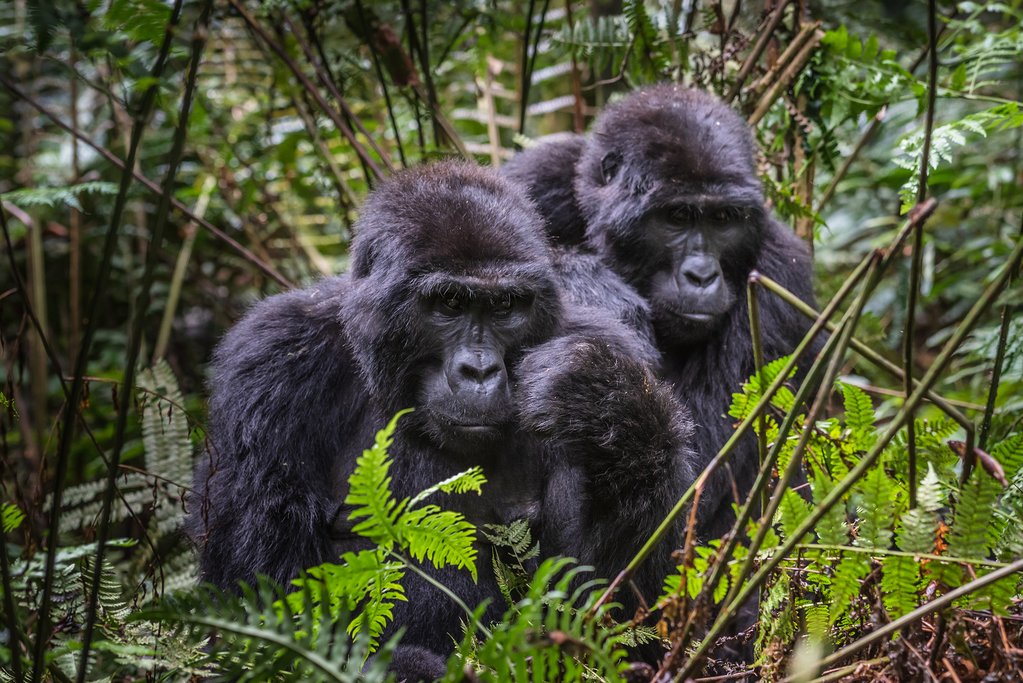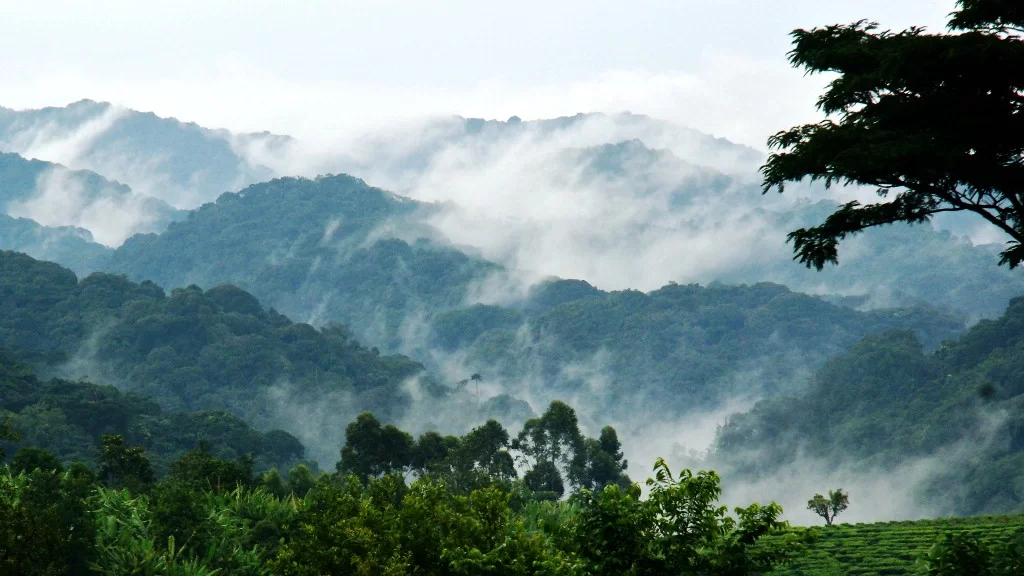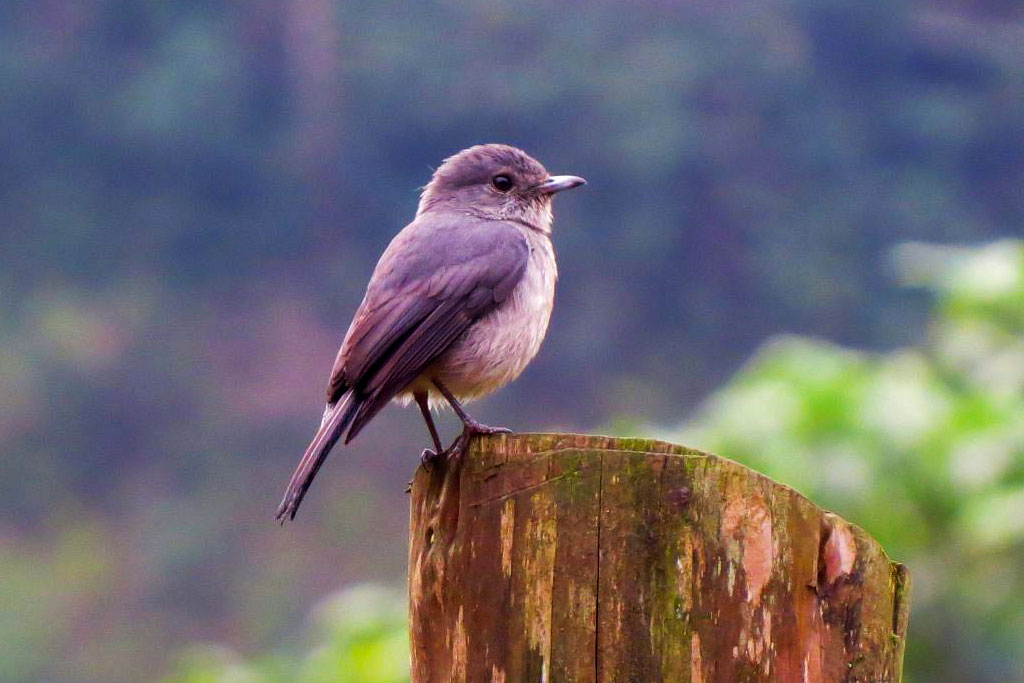Bwindi Impenetrable National Park
- Home
- National Parks in Uganda
- Bwindi Impenetrable National Park
Bwindi Impenetrable National Park

Bwindi Impenetrable National Park (BINP), located in southwestern Uganda, has a unique ecosystem that is home to rich biodiversity. The park is home to an incredible diversity of flora and fauna, including many protected species. Bwindi Impenetrable National Park is located in a mountainous region on the edge of the Western Rift Valley, also called the Albertine Rift It is bordered by the Democratic Republic of the Congo to the west and by the Rift Valley Ridge that forms the western wall of the Great Rift Valley, which is a World Heritage Site Classified as a national park in 1991, it covers 32,000 hectares as a forest reserve The altitude ranges from 1200 to 2400 meters above sea level.
Bwindi Impenetrable National Park is home to seven groups of common gorillas (Buhoma, Habinyanja-Rushegura, Mubare, Nkuringo and Oruzogo), four of which can be visited by tourists Bwindi Impenetrable National Park is home to 480 mountain gorillas, an abundance of flora and fauna and is a paradise for bird watchers Bwindi is located in the heart of the impenetrable forest and is surrounded by three nature reserves: the Mgahinga Gorilla National Park in the south, the Sarambwe Reserve in DR Congo to the west and the Okanda Reserve in Rwanda The annual rainfall is 2390 mm and the average temperature is 76 °C Discover Bwindi Travel, Forest Wildlife, Conservation Efforts, Visit Parks, Survival Options, Video Footage, Safari Images, Bird Watching, Visit Community Village, Cultural Dances and Local Food on the Endangered Mountain Gorilla Trail It is a rather difficult forest to enter, with dense vegetation and requires a lot of effort and time to pass due to the availability of only a few paths The area is also known for the Batwa, the original guardians of the impenetrable forest where they collected honey, lived on the fruit of the trees and hunted wild animals with bows and arrows.
Flora and Fauna Diversity

The vegetation of Bwindi is a mixture of lowland and mountain forests, creating a unique ecosystem with a wide variety of plant species. The park’s dense canopy, grasslands and rich soils are home to more than 1,000 species of flowering plants, including more than 200 species of Bwindi trees, some of which are endemic to the region. Notable species include African mahogany, redwood and brown mahogany.
The park has a high concentration of ferns, mosses and epiphytes, which thrive in its humid environment. These plants contribute to the lush and green appearance of the park. Local communities around Bwindi have traditionally used a variety of plants for medicinal purposes. Species such as Prunus Africana are known for their medicinal properties The park is also famous for its mountain gorilla population, which is home to a wide range of other animal species, including mountain gorillas. Bwindi is one of the few places in the world where mountain gorillas can be found. The park is home to almost half of the world’s population of this critically endangered species.
Bird Watching in Bwindi Impenetrable National Park Uganda

Bird watching in Bwindi Impenetrable National Park is a unique and rewarding experience, often regarded as one of the best birding opportunities in Africa With more than 350 bird species recorded in the park, including 23 species endemic to the Albertine Rift, Bwindi offers bird lovers the opportunity to see a wide range of scarce and attractive birds in their natural habitat. Bwindi’s bird diversity is a reflection of its well-preserved habitats and conservation efforts are essential to preserve this rich avifauna. Sustainable tourism practices, including responsible bird watching, help ensure that the park remains a sanctuary for these species. Birds in Bwindi Impenetrable National Park not only offer the opportunity to see some of the rarest in the world, but also the opportunity to immerse in one of the most pristine natural environments in Africa.
Gorilla Trekking in Bwindi Impenetrable National Park
Bwindi Impenetrable National park is well known for its mountain gorilla population. Gorilla trekking is the park’s primary attraction, offering a rare chance to see these magnificent creatures in their natural habitat. The experience is both challenging and rewarding, with a limited number of permits available each day to ensure the gorillas’ conservation.
Nature Walks and Hiking
Bwindi Impenetrable National Park offers several trails through the dense forest, each offering a unique experience. Popular trails include the Buhoma-Nkuringo Trail, Rushura Hill Walk and Muyanga Waterfall Walk. These walks allow visitors to discover the rich flora and fauna of the park.
Batwa Cultural Experience
The Batwa Pygmies are the indigenous people of the Bwindi Forest. Visitors can take cultural tours to learn about their traditional way of life, including hunting, gathering and the use of medicinal plants. This experience allows you to better understand the cultural heritage of the park.
Mubwindi Swamp
The Mubwindi Swamp, located in the Ruhija sector, is a prime birdwatching location and offers a peaceful environment for those looking to explore the park’s biodiversity.
Scenic Views and Photography
Bwindi’s various landscapes offer excellent photo opportunities, from misty mountains to dense forests. The different viewpoints of the park offer breathtaking panoramic views, especially at sunrise and sunset.
Bamboo Forests
The bamboo area, especially in the Ruhija region, constitutes a unique ecosystem in the park. It is an ideal place for nature lovers to explore and observe scarce plant species.
Waterfalls
The park is home to several waterfalls, including the magnificent Munyaga Falls, accessible by hiking trails. These places offer a peaceful retreat in the heart of the dense forest.
Wildlife Viewing
In addition to gorillas, Bwindi is home to other primates such as chimpanzees, black and white colobus monkeys and baboons, as well as a variety of other mammals such as forest elephants and duikers.
Community Tours
Visitors can connect with the local communities surrounding the park through various tours. These include visiting local schools, farms and craft markets, providing an insight into the daily lives of the locals who live near the park.
Accommodation in Bwindi Impenetrable National Park
Bwindi Impenetrable National Park offers a variety of accommodation options, ensuring that all types of travelers can enjoy a comfortable and memorable stay while exploring one of the world’s most unique and biodiverse regions These range from luxury, mid-range and budget
Best Time to visit Bwindi Impenetrable National Park
The best time to visit Bwindi Impenetrable National Park is during the dry season from June to August and from December to February These months offer the most favorable conditions for gorilla trekking and other outdoor activities However, if you prefer less crowds and don’t mind the rain, the shoulder seasons from March to May and September to November can still be a rewarding time to visit the park
Popular Safari Destinations
Explorer More Safaris
- 14-Days Uganda Safari Gorilla Chimpanzees and Wildlife
- 12 Days Gorillas and Chimpanzees Wildlife Safari
- 10 days best of uganda primates & wildlife safari
- 6 Days Gorillas and Chimpanzee Trekking Safari
- 3 Day Bwindi Gorilla Trekking Safari
- 4 Day Uganda Gorilla Trekking and Wildlife Safari
- 4 Days Gorilla Trekking and Adventure Safari
- 5 Days Uganda Gorillas and Chimpanzee Tracking Safari
- 4-Day Rwanda Gorilla Trekking and Golden Monkey Tracking Safari
- 5 Day Gorilla Habituation and Chimp Trekking
- 4-Day Uganda & Rwanda Gorilla Trekking Tour
- 3 Days Bwindi Gorilla Trekking Ugnada from Rwanda
- 10 Days Uganda Primates and Game Safari
